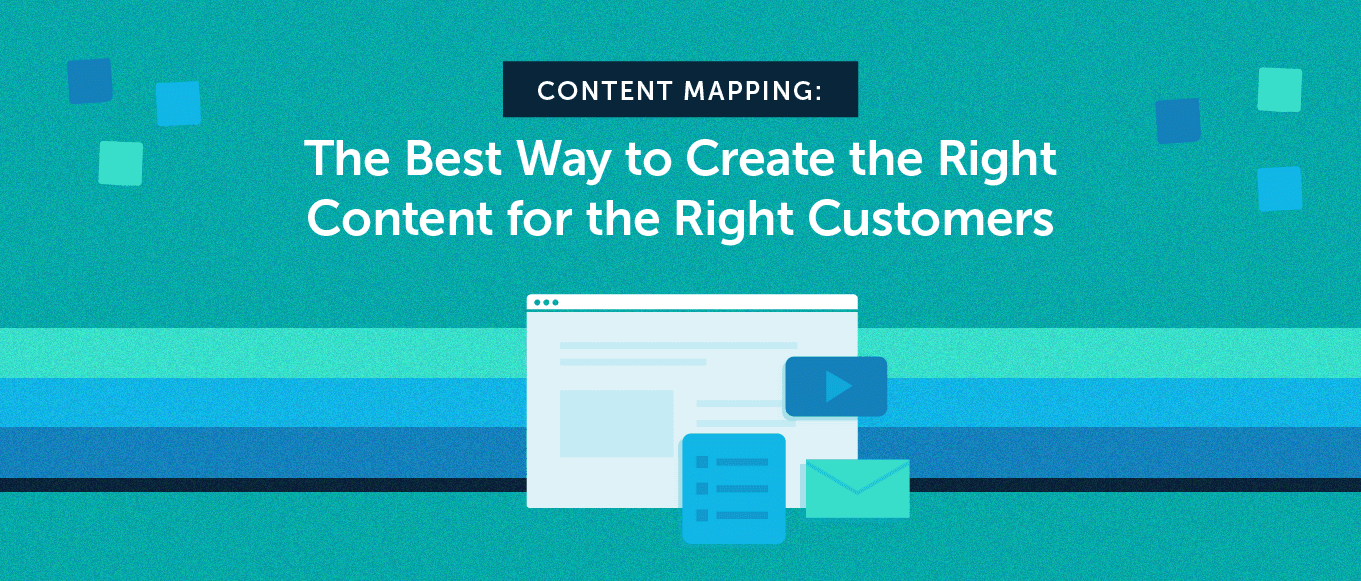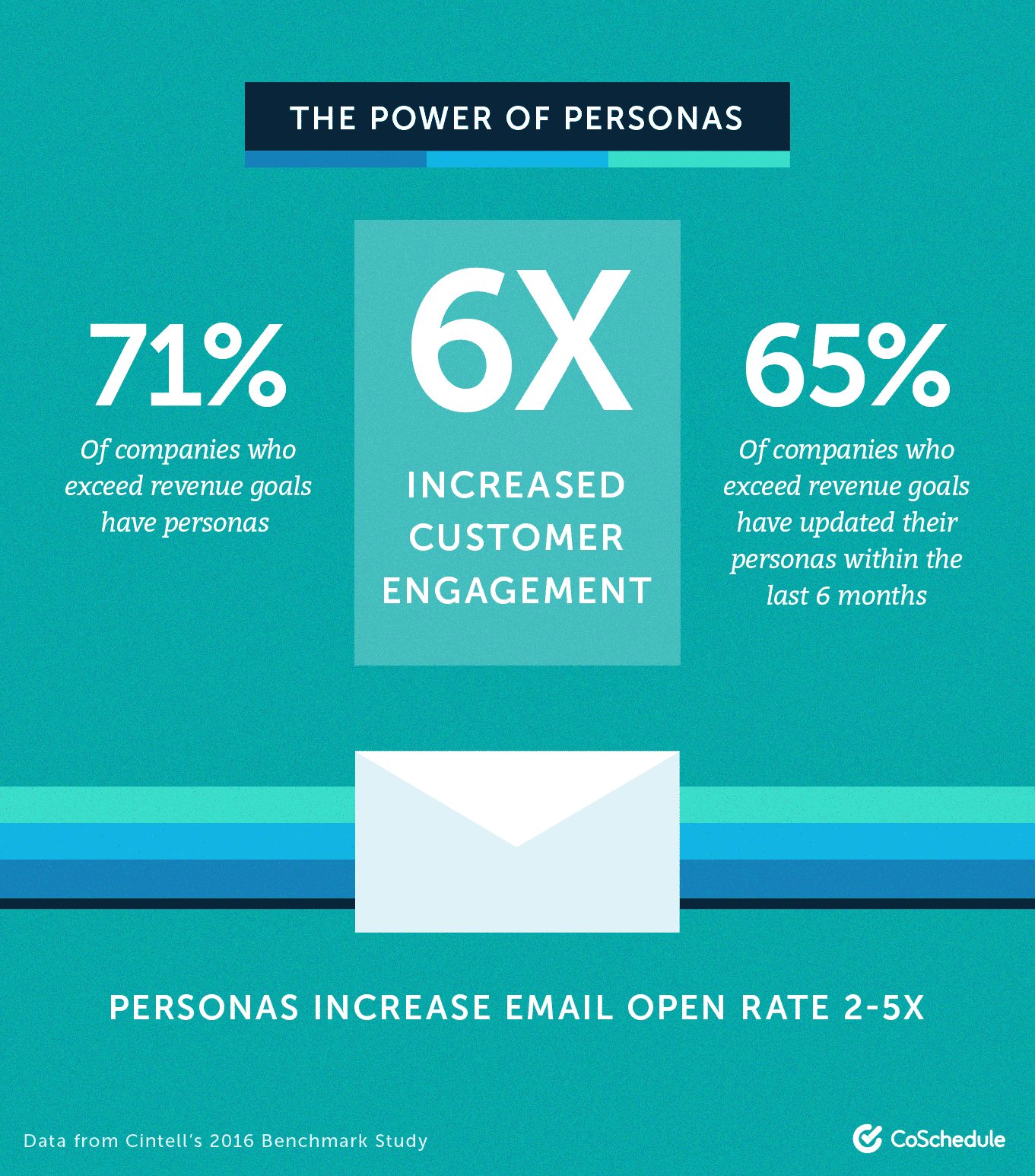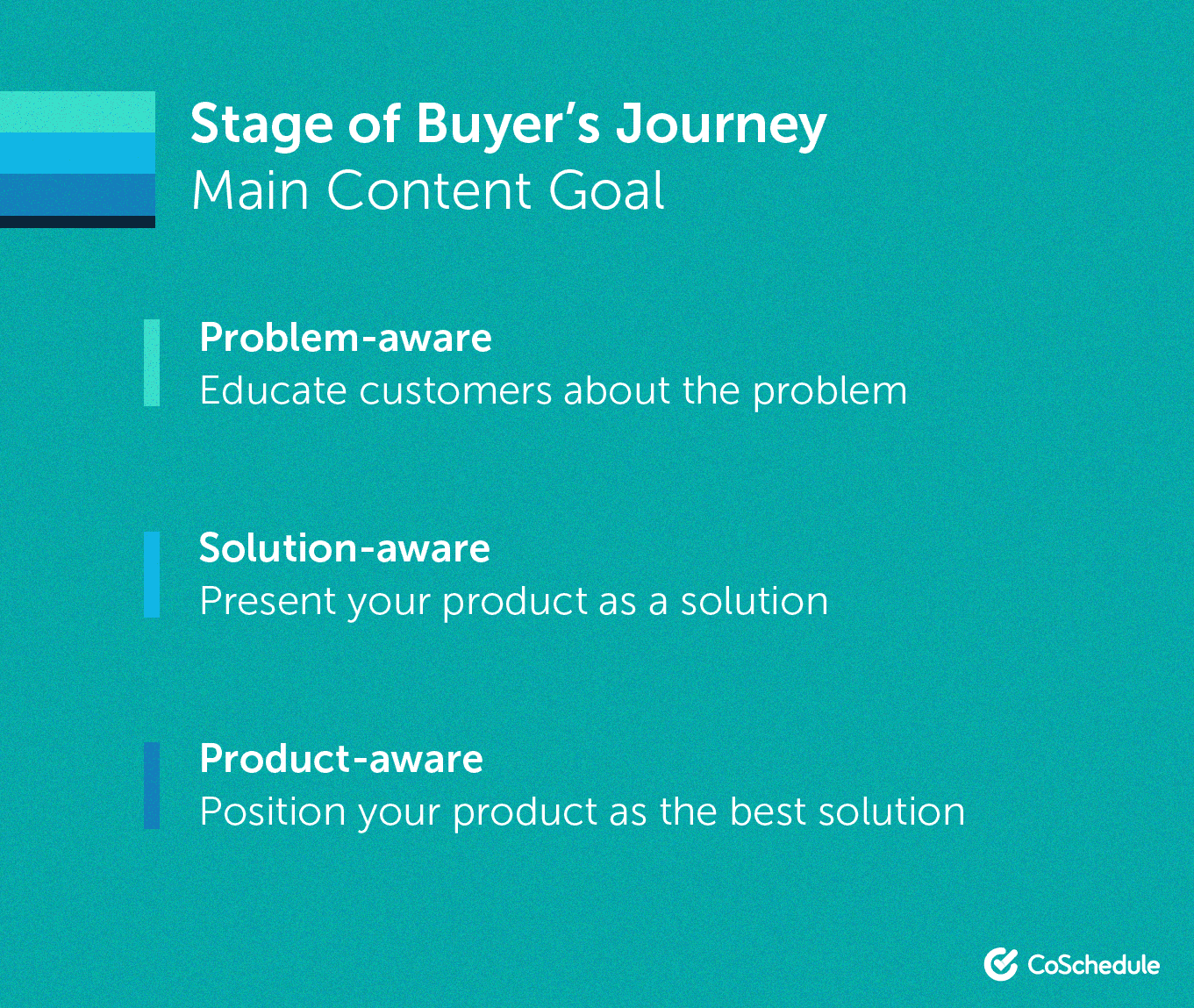Content Mapping: The Best Way to Create the Right Content for the Right Customers
 “Let’s talk about your budget for [product].”
This statement will spark wildly different reactions based on who you ask, in which circumstances, and when.
If you say this to an interested prospect that called you, you’ll do great. If you throw it at a person walking by your store, they might walk away even faster. If you just say it to anyone you see on the street, you’ll have a terrible time, and you definitely won’t see results.
Content marketing is no different. You could spend days perfecting each piece of content, but if it’s not aligned with a clear audience, a specific problem, and the right stage of the buying journey, it won’t give you the results you wanted.
The solution? Content mapping. In this guide, you’ll learn everything you need to map your content, including:
“Let’s talk about your budget for [product].”
This statement will spark wildly different reactions based on who you ask, in which circumstances, and when.
If you say this to an interested prospect that called you, you’ll do great. If you throw it at a person walking by your store, they might walk away even faster. If you just say it to anyone you see on the street, you’ll have a terrible time, and you definitely won’t see results.
Content marketing is no different. You could spend days perfecting each piece of content, but if it’s not aligned with a clear audience, a specific problem, and the right stage of the buying journey, it won’t give you the results you wanted.
The solution? Content mapping. In this guide, you’ll learn everything you need to map your content, including:
- The easiest way to define your buyer persona using four, easy questions and a simple fill-in-the-blanks template.
- Mapping the funnel to specific customer challenges and types of content, so you can plan and create content that instantly helps your audience.
- Building a bulletproof editorial calendar, so you can always view which content serves which segment of your audience.
Map Content to Your Calendar With These Templates
A calendar is an essential tool for putting this post into practice. Download a collection of Excel-based calendars you can use now.- What is a Content Map? Why Do You Need Content Mapping?
- Step One: Develop a Buyer Persona
- Step Two: Master the Phases of the Marketing Funnel
- Step Three: Map Out a Customer Buyer Journey
- Step Four: Establish a Basic Content Marketing Strategy
- Step Five: Plan Content Topics That Match the Buyer Journey
- Step Six: Add Each Content Piece to Your Editorial Calendar
- Step Seven: Know How to Best Distribute Each Piece of Content
What is a Content Map? Why Do You Need Content Mapping?
A content map ensures your content aligns with your audience, their problem, and their customer journey stage. It’s a plan that helps you deliver the right content, to the right people, at the right time. Content mapping connects each piece of content you create to the customer journey your target audience goes through. Without it, your topics, messages, and content promotion will miss the mark.Content mapping connects each piece of content you create to the customer journey.
Click To Tweet- Learn what your audience needs from you at every stage of the customer journey.
- Uncover the best content ideas and formats to focus on for maximum results.
- Build an effective content calendar and hit deadlines every time.
- Empower your sales and customer success teams with relevant content at crucial stages of the funnel.
Step One: Develop a Buyer Persona
To match your content to your target customer, you need to know them inside out. To do this, develop a buyer persona. A buyer persona is a simple character description of a company’s target customer. You may also know it as an audience persona, user persona, or marketing persona. Your buyer persona will typically include information such as age, gender, geography, education level, income, occupation, and interests. By digging deeper, you can also add lifestyle, career goals, priorities in life, hobbies, fears, and obstacles. Most importantly, your buyer persona includes needs, pain points, and challenges you can solve with your products or services. A buyer persona can make a lasting positive impact on your entire company, from engagement with your messages throughout the buying journey all the way to actual cash in the bank. You’ll find the most useful, practical insights about your buyer persona in your best customers. Identify those who have been with you the longest, repeatedly buy from you, and are a breeze to support. Ask yourself:
You’ll find the most useful, practical insights about your buyer persona in your best customers. Identify those who have been with you the longest, repeatedly buy from you, and are a breeze to support. Ask yourself:
- What qualities do these customers share?
- What made them search for a solution like ours?
- Why did they purchase our product/service over a different solution?
- What goals have they achieved with our solution?
{Insert your company} creates content to attract {insert buyer persona}, so they can {insert desired outcome} better.Here’s how this statement works for CoSchedule:
CoSchedule creates content to attract professional marketing managers, so they can get organized better than ever.This process will help you write human-centered content that appeals to your target customer’s needs. In the long run, you’ll be able to brainstorm better ideas, write faster, promote your content more efficiently, and increase your conversion rates.
Step Two: Master the Phases of the Marketing Funnel
Next up is sketching out your marketing funnel and understanding how different content formats and topics fit into it. No matter how unique your business is, you can still boil your marketing funnel phases down to these three:- Top of the funnel (TOFU), where the customer is problem-aware.
- Middle of the funnel (MOFU), where the customer is solution-aware.
- Bottom of the funnel (BOFU), where the customer is product-aware.
What's the difference between all of the phases in the marketing funnel?
Click To Tweet
Top of the Funnel (Problem-Aware)
At the top of the funnel, prospects are unaware of you or even your competitor’s solutions. They know they have a problem and are looking for answers to their questions. Problem-aware prospects are looking for informational, useful, practical content that can help them name their problem and understand it better. Content that works for top of the funnel prospects includes:- Blog posts
- Website content
- Ads on social media or search engines
- Informative videos
Middle of the Funnel (Solution-Aware)
At the middle of the funnel, prospects are considering solutions. They feel like they know enough to start reviewing options. They’re searching for content that connects the dots between their pain and solutions available to them. Keep in mind that the solutions they’re reviewing aren’t necessarily just your competitors. For example, someone looking for a content marketing solution may consider CoSchedule’s Content Organizer, along with other specialized software options. They might also be considering spreadsheets, outsourcing to freelancers or agencies, or even a pen and paper/whiteboard option. For middle of funnel content, consider content such as:- Email drip campaigns
- Webinars
- Resource libraries
- Checklists
- Buyer’s guides
Bottom of the Funnel (Product-Aware)
Once they reach the bottom of the funnel, prospects are likely purchase-ready. Your job at this stage is to convince them that you are their best choice. They need to feel confident you’ll help them resolve their challenge. Product-aware content exists to drive action and conversion. To make this happen, focus on creating:- Product tutorials
- Customer success stories
- Video training
- Free courses
Step Three: Map Out a Customer Buyer Journey
With the three funnel stages in mind, you can now map out what they mean for your business and your buyer persona. Mapping a customer buyer journey means you’ll understand what a person experiences as they research their problem, investigate solutions, and choose a product or service to buy. Picture this as a table with one column for each of the stages and rows for various features and experiences of your buyer persona in each of these stages. Answer these questions for each stage of the journey, and add them to your table:
Answer these questions for each stage of the journey, and add them to your table:
- What is their main goal at this stage? Can you identify their user intent?
- What questions do they need answered?
- Which other decision makers, if any, are they talking to?
- What touchpoints are they likely to have with you, if any? For example, visiting your website or your knowledge base, taking a free trial, live chat messaging.
- What are their expectations of you before they can move to the next stage? For example, knowing all pricing comparisons, understanding features, speaking to a sales rep.
Step Four: Establish a Basic Content Marketing Strategy
Use your customer buyer journey map to sketch out a content marketing strategy. Did you think your content marketing strategy needs to be an elaborate, boring 55 pages long document? If the answer’s "yes," you’ll love this step. In the table you’ve worked with in the previous section, you can add three more rows to map out the content that will support each of the journey stages. To fill these rows, here are three simple but powerful questions to answer for each of the stages.
To fill these rows, here are three simple but powerful questions to answer for each of the stages.
- What type of content will you publish? Blog posts, video series, checklists, case studies, video interviews, email newsletter, PDF downloads, etc.
- Where will you publish this content? Company blog, standalone website pages, webinar platform, YouTube, product knowledge base, Instagram, etc.
- How will you measure results? Pageviews, time on page, conversion rates, click-throughs, comments, shares, watch time, etc.
Step Five: Plan Content Topics That Match the Buyer Journey
Brainstorming the right topics only takes two, simple steps. First, use CoSchedule’s well-known, 30-minute content brainstorming process:- Set the timer for 10 minutes and write down as many potential ideas as you can. If you’re doing this as a team, give every team member a stack of sticky notes and get everyone to write one idea per sticky note. The goal at this stage is quantity!
- Rank your ideas on a three-point scale in 10 minutes. One is weak, two is average, and three is exceptional. In a team, try both ranking them silently and out loud.
- Choose your best ideas in 10 minutes. Ideas ranked with the highest score are your best ideas. Write these down.
 With a list of your top ideas, you can move to the second step: getting specific about each of them.
To do that, answer these simple questions:
With a list of your top ideas, you can move to the second step: getting specific about each of them.
To do that, answer these simple questions:
- Does this topic address a clear stage of the funnel?
- Does it match a question/problem that my buyer persona has? This is your WIIFM, which stands for "What’s in it for me?" or the reason your target customer would read it.
- What is the best angle to take with that piece of content?
- What channel or platform should it be on to reach the target customer at the ideal point in the customer journey?
Step Six: Add Each Content Piece to Your Editorial Calendar
Your content ideas will only make an impact if you bring them to life. The best way to make it happen? An editorial calendar. A content marketing editorial calendar is a tangible plan of attack for you and your team. It gives you a bird’s-eye view of what’s going on, but also a way to keep everyone organized. With a calendar for all your content, you’ll always know what to prioritize and focus on. Here’s a simple way to set it up:- Define a deadline for each piece of content. Start with a publishing frequency you can sustain; you can always tweak it later.
- Place those pieces on your calendar. This will help you see how all your topics sit together and adjust to the time of year or other circumstances, if you have to.
- Work backwards from deadlines to see when pieces need to be researched, written, edited, and prepared for publishing. This is always useful, but particularly for teams that depend on efficient collaboration.
- Color-code for easy overview. With color-coding, you’ll easily see which buyer persona and funnel stage each piece is aimed at.
Set up your marketing calendar using the bests strategies.
Click To Tweet- Color labels: rename and tailor them to your needs and unique personas.
- Tags: add tags that match your buyer journey stages.
 Once you’ve done that with all the pieces on your calendar, you’ll have a content map that shows you exactly who your content is made for.
Once you’ve done that with all the pieces on your calendar, you’ll have a content map that shows you exactly who your content is made for.
 You can also use Saved Calendar Views to quickly access your upcoming content plan for each persona and funnel stage.
You can also use Saved Calendar Views to quickly access your upcoming content plan for each persona and funnel stage.

How Much Content Do You Need at Each Stage of the Funnel?
The answer looks like an inverted pyramid. As a rule of thumb, you’ll need:- The most content at the top of the funnel.
- A little less content at the middle of the funnel.
- The least content at the bottom of the funnel.

Step Seven: Know How to Best Distribute Each Piece of Content
The final piece of your content map puzzle is getting the right pieces of content in front of the people that need it most. Without content distribution, you’ll waste all the time you’ve spent on content mapping, brainstorming, planning, and creation. To know where to distribute each piece of content, go back to the tables you’ve filled out earlier for the three stages of the funnel. Review all the channels you’ve listed as touchpoints and platforms for your content to live on.Without content distribution, you’ll waste all the time you’ve spent on content mapping, brainstorming, planning, and creation.
Click To Tweet


